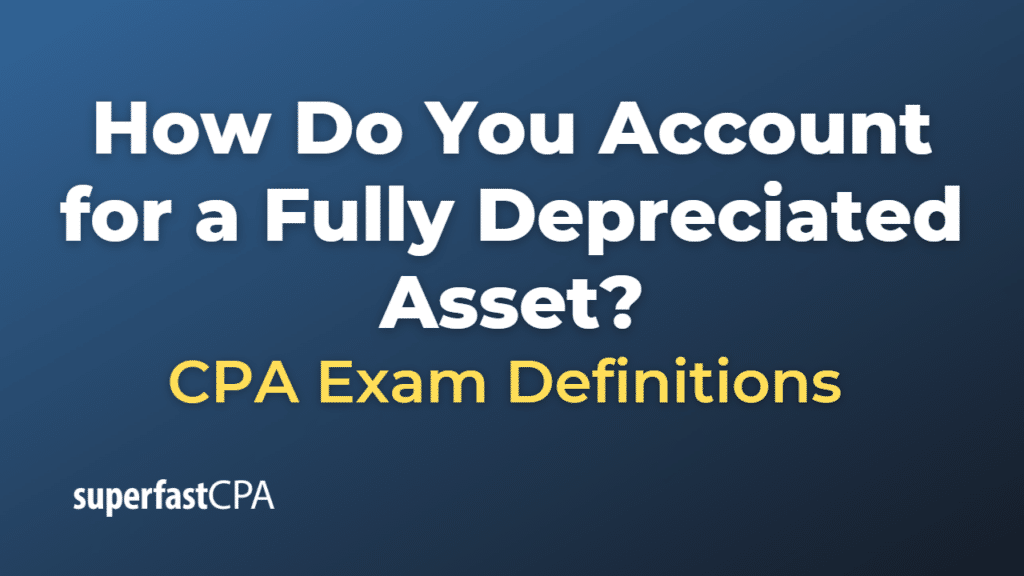Account for a Fully Depreciated Asset
When an asset is fully depreciated, it means that the asset’s cost has been completely allocated to depreciation expense over the asset’s useful life, and the accumulated depreciation is equal to the asset’s original cost. Here’s how you account for a fully depreciated asset:
- Keep the asset on the books: Even when an asset is fully depreciated, the asset’s cost and its accumulated depreciation stay on the books. The asset continues to be reported on the company’s balance sheet at its original cost, and the accumulated depreciation account also continues to be reported. The net book value of the asset becomes zero.
- No more depreciation expense: Once an asset is fully depreciated, the company will stop recording depreciation expense for that asset. The asset has already been written down to zero value (though it may still have market value).
- Asset disposal: If the company disposes of the fully depreciated asset (through sale, trade-in, or scrapping), the asset’s cost and the related accumulated depreciation are removed from the balance sheet. If the asset is sold, any money received is considered a gain. Since the book value is zero, the entire amount of money received would be a gain. If there’s no money received, there’s no gain or loss recorded.
- Continued use: If the company continues to use the fully depreciated asset, it doesn’t record any more depreciation expense. However, any costs for repairs and maintenance will continue to be expensed as incurred.
Remember, just because an asset is fully depreciated on the books, that doesn’t mean it can’t still be a productive asset for the company. Many assets have useful lives that extend beyond their depreciation periods.
Example of Account for a Fully Depreciated Asset
Suppose a business purchases a machine for $10,000. The machine has an estimated useful life of 10 years and a salvage value of $0. The company uses straight-line depreciation. This means that the annual depreciation expense would be $1,000 ($10,000 cost / 10 years).
At the end of 10 years, the machine would be fully depreciated. The following entries would have been recorded annually for 10 years:
| Date | Debit | Credit |
|---|---|---|
| End of each year for 10 years | Depreciation Expense $1,000 | Accumulated Depreciation $1,000 |
After 10 years, the machine’s book value would be zero ($10,000 cost – $10,000 accumulated depreciation = $0), but it would still be listed on the balance sheet at its original cost, with the accumulated depreciation against it.
No further depreciation would be recorded for this machine. If the company continues to use the machine, any costs associated with maintaining the machine would be expensed as incurred.
If the machine is sold for $500, the following entries would be made:
| Date | Debit | Credit |
|---|---|---|
| At the time of sale | Cash $500 | Machine $10,000 |
| Accumulated Depreciation $10,000 | Gain on Sale of Machine $500 |
The gain of $500 is recorded because the machine was sold for $500 more than its book value of $0.
If the machine is simply scrapped and no cash is received, the entries would look like this:
| Date | Debit | Credit |
|---|---|---|
| At the time of scrapping | Accumulated Depreciation $10,000 | Machine $10,000 |
In this case, no gain or loss is recorded because the machine is fully depreciated, and no cash is received from its disposal. The machine and its accumulated depreciation are simply removed from the books.













